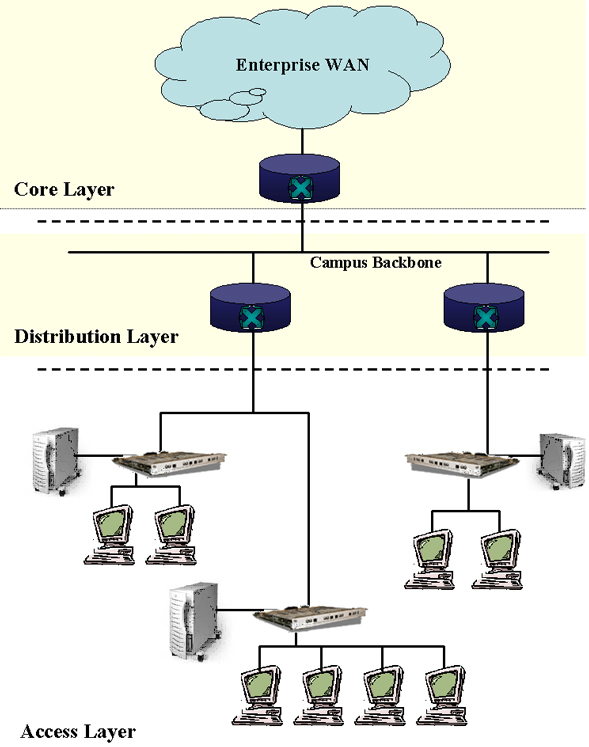
Categorizing Networks by Physical Scope
Introduction.
One of the more important ways to categorize networks is with respect to
their physical scope. Physical scope is a relatively vague phrase
used to abstract on things such as geographic area of coverage and size of
the network. Typical terminology allows for the three major
categories in the following outline.
But it is also usually important to understand the following concepts.
These categories are largely related to the network size or span and number of computers. I will also make efforts to define some related terminology within this page. It is also important to remember that most of these concepts traverse implementations in wire or wireless, though distinct sets of jargon have largely developed. Even though this isn't a course in network design, I want to introduce some terminology and concepts that are generally accepted as important for intelligent network design. The first major idea has to do with creating a three tiered hierarchy within an administrative domain. This is illustrated in the following diagram. |

| While it is often the case that network
implementations don't actually fit this sort of ideal, there are
many reasons why it is considered to be an "ideal". This
diagram will also help me to clarify several notions. The access layer is generally where the typical user interacts or gains access to the network. People typically either connect in three of the main ways.
The ports are usually connected to some sort of hub or switch, though much more will be said about this as we progress through the semester. An Access LAN segment is typically defined by an access level switch or hub and the computers and connections that are available through it. The following diagram focuses on some designs for Access LANs. Notice how a printer is available through the network, but still quite close to the users in an Access LAN. |
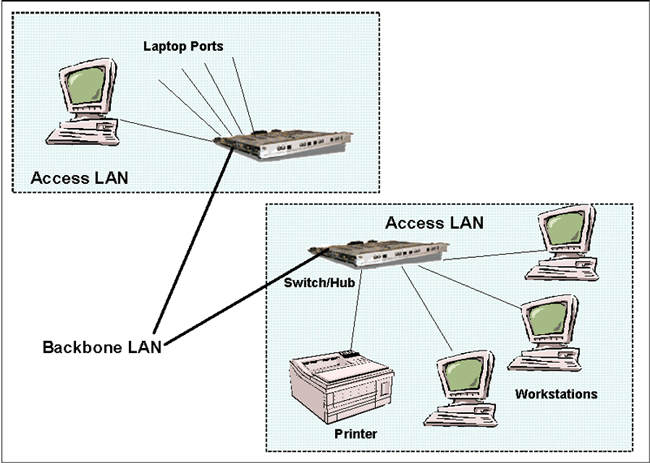
|
The distribution layer is used to interconnect the access layers to other resources. Typically these other resources are
Within the distribution layer and central to it is what is usually called the backbone or backbone LAN if it is within a particular building campus. This backbone is usually the throughway for users to get to the core layer or larger Internet. LAN Characteristics. The computers and other devices in a LAN are physically close to each other. Typically this means something like within a department or on the same floor. But LANs can also reach across a small college campus, though this is likely to be incredibly inefficient in many ways unless designed appropriately. Usually a LAN is privately owned and links devices in a particular home, office, building or campus. LAN sizes are pretty much limited to a few kilometers in their span. Some jargon relating to LANs that is quite widespread is contained in the following list. The following diagram gives a representation of some of these notions.
Before we go further I want to define one other aspect of an administrative domain. A demilitarized zone can be constructed just within the administrative domain so that it is generally more accessible to those outside the administrative domain, while still be accessible to those within it. We will say much more about these as we go through the course. The following diagram represents a typically configured demilitarized zone. |
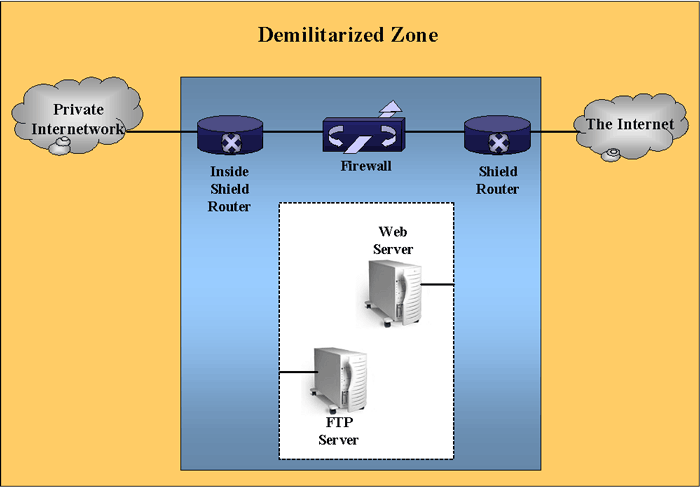
| This demilitarized zone is likely to be used for
a web server that has a publicly known URL. It obviously needs
protection, but the rest of the network needs extra protection from
some people that can access the resources in a demilitarized zone. So we might have some sort of server cluster or server LAN in a demilitarized zone or someplace else off of the distribution system well within the administrative domain. The following is a diagram represents such a LAN segment. There are switches that have been developed to specifically operate under these sorts of conditions which we will talk about more later in the course. |
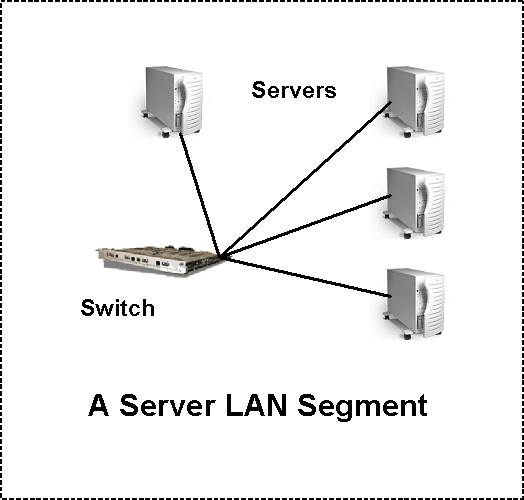
| It is not atypical to have
storage LANs or SANs -
Storage Area Networks in firms that require significant
backups and storage. Though these are most likely to be very
internal to an administrative domain, attached directly to the
distribution layer. Obviously, these administrative domains can be contiguous or not. Think about a state government. For example, they are likely to have many different office buildings around a state, and some will be quite large. MAN Characteristics. A MAN consists of two or more LANs networked together. But this network is much larger than a LAN on a university campus, for example. The reach or span of a MAN corresponds to a larger metropolitan area or city. This terminology isn't used nearly as often as LAN or WAN.It might be a particular corporation's cable television network. It might also be configured to interconnect a number of LANs so that they can share resources. For example, a particular corporation might use a MAN to connect all of its sites within a city. This may be even more likely to occur in a metropolitan government or a large regional school district. For example, this sort of terminology would be more appropriate when referring to sections of the internet that lie relatively directly off some high speed internet backbone router associated with a major access point in an urban area. Many telephone companies provide a MAN service called SMDS - Switched Multi-megabit Data Services. |
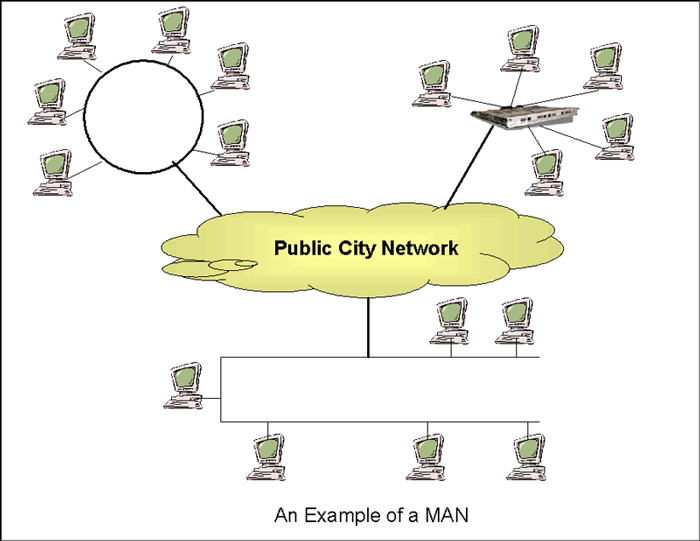
| WAN Characteristics.
A WAN is a network that spans a large geographic area. A WAN could
correspond to all of the LANs and home users that a particular a telephone
company provides internet connections for. It can span a country,
continent or even the whole planet. It could also correspond
to a private network developed by a particular national or multi-national
organization. Transmission speeds on some WAN segments can actually be slower than those on LANs. This is likeliest to be caused by instances where some firm keeps on the cutting edge in their LAN developments while relying on someone like a telephone company to provide WAN connections. Unfortunately, the telephone companies still make use of old telephone lines, not just T1s, T3s or OCs. When two or more networks are connected they are often called an internetwork. |